Tiny Neighborhoods
I often wonder if the standard approach to housing is the best we can do. About 70% of Americans live in a suburb, which means that this design pattern affects our lives – where we shop, how we eat, who we know – more than any other part of modern life.
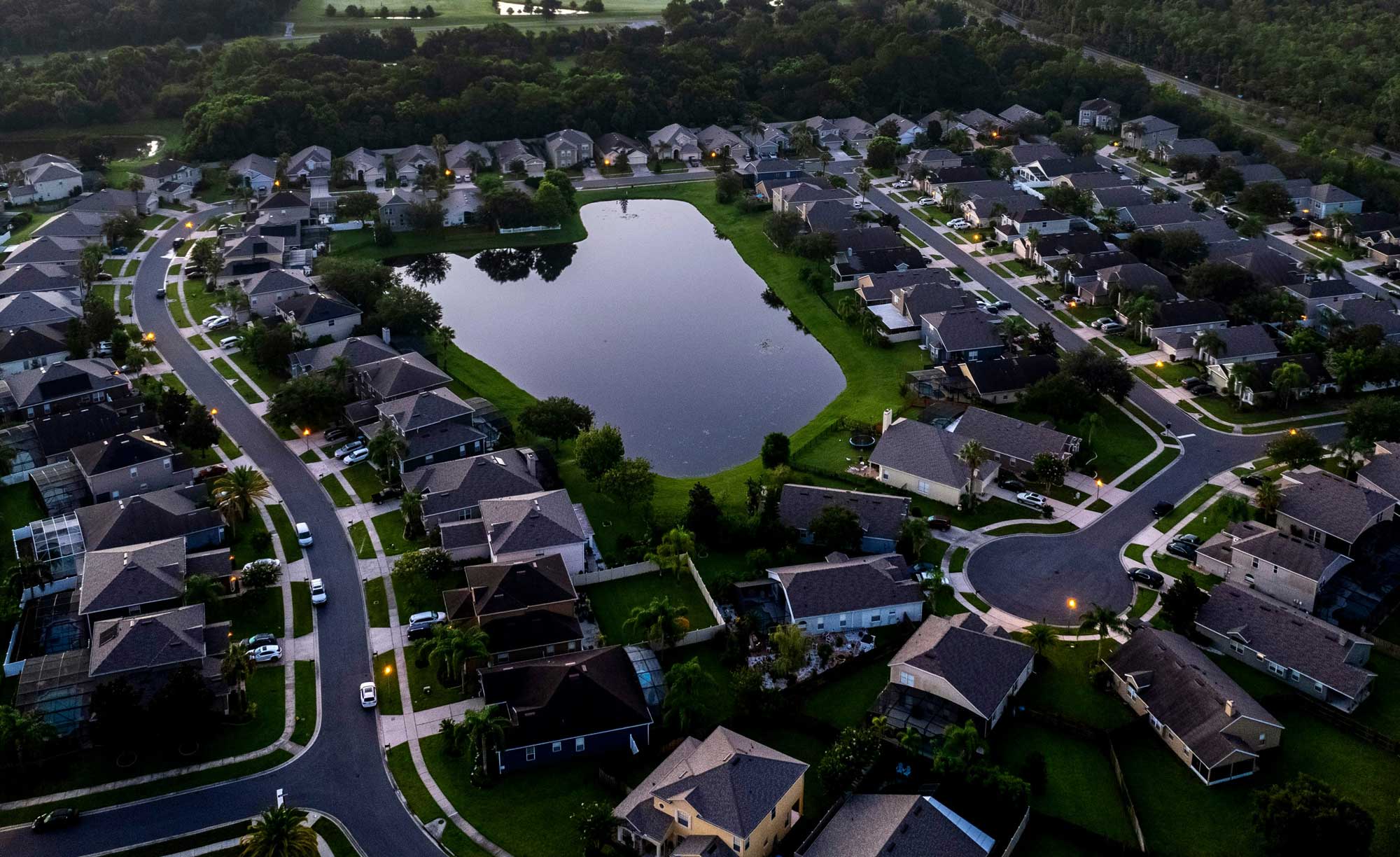
There's a lot to like about suburbs – the privacy, autonomy, space, quiet atmosphere, and opportunity to build wealth all make them an attractive option for millions of people. But at the same, I have experienced some serious challenges to my own happiness in my time living as a suburbanite and I suspect that some of our country’s health problems and general malaise could be traced back to isolated living.
We are the richest country in the history of the world and the average person is still not particularly happy. Let's take a moment to ask a simple question – could a different kind of housing help make us happier?
College
If you ask people to think about the time in their life when they were happiest, many of them say college.

When I was in college, I enjoyed having people around that I could play frisbee or cards with in the evenings. It was nice to know that there was usually someone who would be up for grabbing dinner or studying together. There was a shared aspect to free time that was fun.
As all adults know, some of the ease of college comes from having almost no real responsibilities, but I don't think that's the whole story. Some of the joy comes from being close to other people.
And that is a choice.
For all it's benefits, college has real drawbacks...parts of it are pretty weird. One Friday, I left for the weekend as my roommate was playing Grand Theft Auto. When I got back on Sunday, he was in the exact same place. He hadn't slept. His entire weekend had been spent playing video games while chugging two dozen Mountain Dews. My time in a dorm was sometimes more than weird...some of it was legitimately dangerous. The guys in the room next door were selling drugs. Another guy got blackout drunk and sprayed a fire extinguisher all over our dorm. Yet another guy stole my iPod. There's a reason people move out of dorms once they can afford to.
Despite the strange and sketchy moments, I remember college as a wonderful time marked by long evenings of living close to one another. The best part was ping pong. Our dorm had a ping pong table in the common room downstairs and we played most nights. It may sound inconsequential but that ping pong table made a big impact on my quality of life.
We'll come back to that.
The Problems I Experience with Suburban Life
Over the past five years, I've lived in my dream house. It’s in a charming, mature neighborhood a stone’s throw from downtown and there’s plenty of coffee shops and restaurants right outside my door. We even built a shed to work from home in the backyard. In theory, this house is exactly what I wanted.
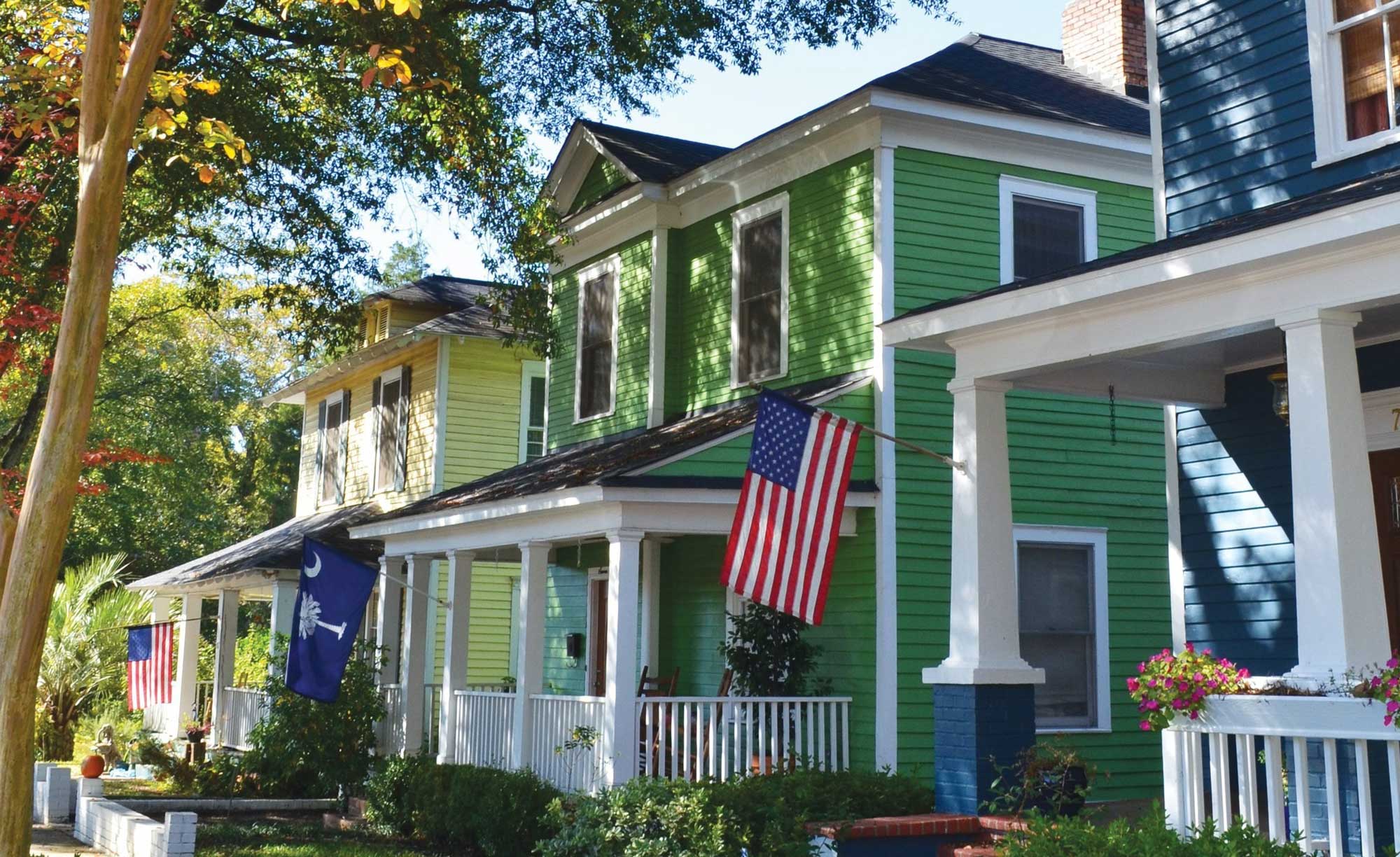
Still though, something about our living situation feels bland. I believe this blandness is a result of both how the neighborhood is physically structured and what our neighbors expect of each other.
Let’s look at a few of the challenges...
1: Neighbors are people I wave at while walking inside.
My wife and I own a rental property a mile from our primary home. I was showing the house to a potential tenant and he mentioned that he lived close to downtown. It turned out we had lived fifty yards from one another for years and didn’t even recognize each other. Another man – Tony – was a semi-retired police officer who lived even closer. During our years as neighbors, we never spoke to one another. I learned his name by reading his obituary.
There are other folks who are more pleasant but not much more known. These are people who we wave at in passing with a quick, cordial smile and a “happy Wednesday” before heading into the safety of our living room. Even though we live on the same street as these people, none of us share a community, or anything for that matter, with one another.
2: Suburban life sucks for children.
In order for my kids to play with another child, they must be driven to a park or a friend’s house.
There’s no possibility of them simply going outside and playing with another child, since their friends live a car trip away. It’s not even safe for them to be in the front yard unsupervised because people drive 40+ mph down our residential street. It’s no wonder teenagers are so excited to get a car.
It’s very hard to give children opportunities for unstructured play with other kids in the typical suburban neighborhood and my neighborhood is no exception.
3: Cooking every night is a drag.
If we want to eat a healthy, tasty meal, the planning and prep starts several days in advance. We get the ingredients, and then one of us – usually my wife – has to spend much of the afternoon cooking dinner. By the time clean up is done, it’s almost time for bed. It takes a lot of time and effort.
Bonus: front lawns are an absurd waste of time and money.
What is the deal with front yards? I have never, ever seen anyone use them on a regular basis. Billions of dollars are spent in mortgages and lawn care to grow grass for no reason. In the 1700’s, the English thought it was a status symbol to have grass which was purely aesthetic and not used for grazing animals. They wanted to show they were wealthy enough to pay servants to walk around and cut grass by hand with a scythe. Unfortunately, even though the founding fathers hit their breaking point and decided to throw off English oppression, they were still suckers for a good grass lawn.
If I could summarize the problems I experience, it's that our adult world has focused on creating and preserving private space at the expense of common space. We can all have our own yard and car and garage and massive kitchen but it means we spend a tremendous amount of time and money trimming our grass, fixing our car, and making our dinner. If something breaks, it's up to us. And things break a lot.
Introducing another way
There is a growing number of people in the United States and Europe who also see these problems with suburban life and are building new kinds of neighborhoods to address them. They want their kids to be able to go outside and spend time with other children without needing a parent to drive them across town. They want to eat a healthy meal without having to cook every night. They want to know their neighbors and work together to build a neighborhood which is more than just a collection of isolated houses. And they want to put their damn front yards to good use.
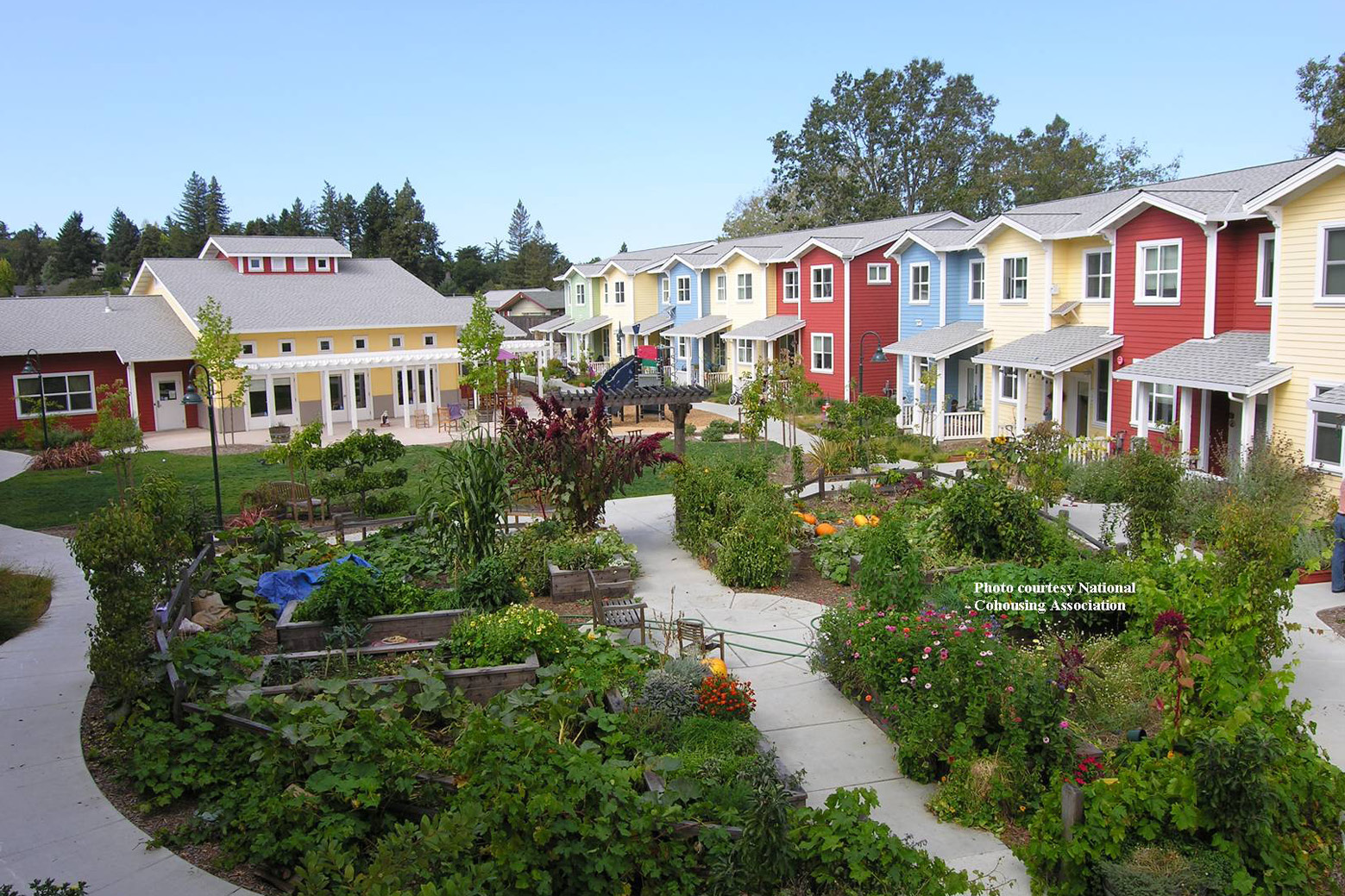
This started in the 1960's with a Danish architect called Jan Gudmand-Hoyer who came together with his friends to dream of a better balance between private homes and common space. Together, they built the first community near Copenhagen, Denmark in 1972. The concept was brought to North America in the 1980's and labeled “cohousing” (a term which makes it sound much weirder than it is). Today, there are thousands of similar communities in the United States, Canada, and Europe building a somewhat different style of living.
I prefer the term “Tiny Neighborhood” and the rest of this essay will use both interchangeably.
In the United States, people think of a neighborhood as being quite large – it wouldn’t be unusual for a single community to contain 500 homes or more. Tiny Neighborhoods are different in size, obviously, but also different in the expectations residents have for what life would be like. Each part of the tiny neighborhood is carefully considered to maximize usefulness to the community and improve quality of life for the residents.
These are the key ideas:
- 20-30 households, with no more than 50 adults
- Each household has their own separate, privately owned home
- A 4,000-6,000 square foot common house
- 2-3 weekly dinners at the common house
- Everyone works together to maintain the common spaces
- Everyone pays a monthly HOA fee
- Cars are parked on the edges to open up space for activities
People who live in tiny neighborhoods remain engaged in the broader world with their own sets of friends and colleagues, but with the addition of stronger neighborhood ties. There seems to be a lot of value in living in proximity to people you feel you can trust, even if they're not your closest social connections.
Mark Granovetter was a sociologist at Stanford University who wrote a paper called “The Strength of Weak Ties.” In an interview, he said "your weak ties connect you to networks that are outside of your own circle. They give you information and ideas that you otherwise would not have gotten." Tons of academic research has been done showing that brief, regular, casual interactions with people play a big role in maximizing happiness.
Typically, a home in a tiny neighborhood doesn't cost much more or less than a traditional single family house. Included in the price is a share of the cost to build the common house, which typically represents about 10% of the overall cost. It's incredible that you can buy both a private home and a share of a 4000-6000 square foot common house for about the same price as a typical single-family home in the same area.
Founding residents get to choose what is important to them about the common house and neighborhood, and determine what fits within their budget.
The common space
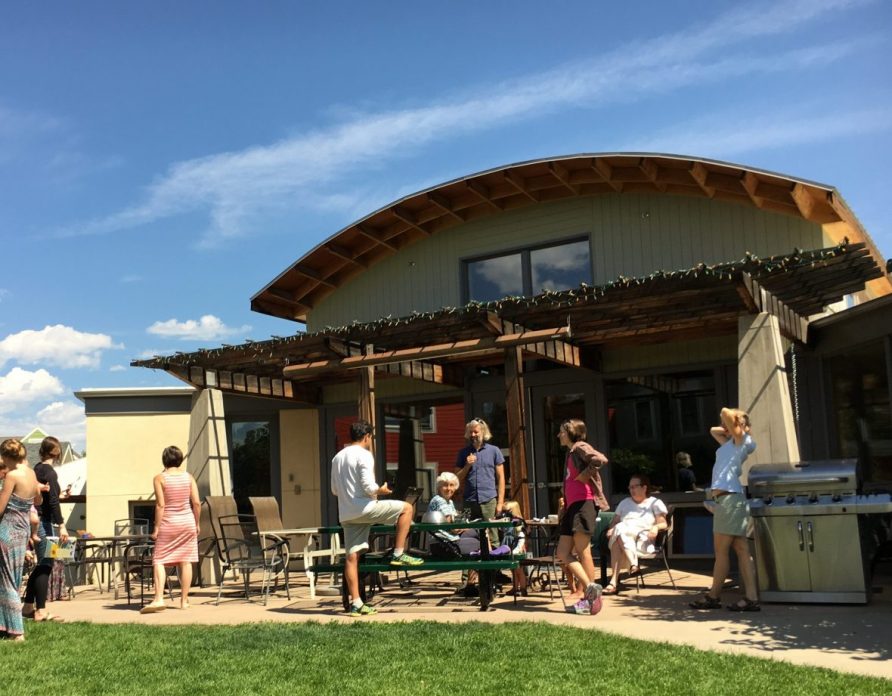
What makes a tiny neighborhood special is the common space, which starts with the common house. In addition to the very ordinary private houses, each community has a central, large, common house accessible by all residents. This house has various amenities, which can include...
- A large kitchen and dining room
- A TV room
- A gym
- A wood shop
- A play area for kids
- Guest suites for people visiting
- Offices
- A music room
- A sauna
The specific amenities are dictated by the community as they work together in the process of designing the common house and the overall layout of the neighborhood.

Weekly dinners
Every tiny neighborhood I've read about hosts weekly community dinners. There is a schedule of 2-3 dinners per week which are available to all residents and cooked by two adults in rotation. Instead of needing to cook every night, families know that they have at least two nights each week where they can simply show up and have dinner handled by someone else.
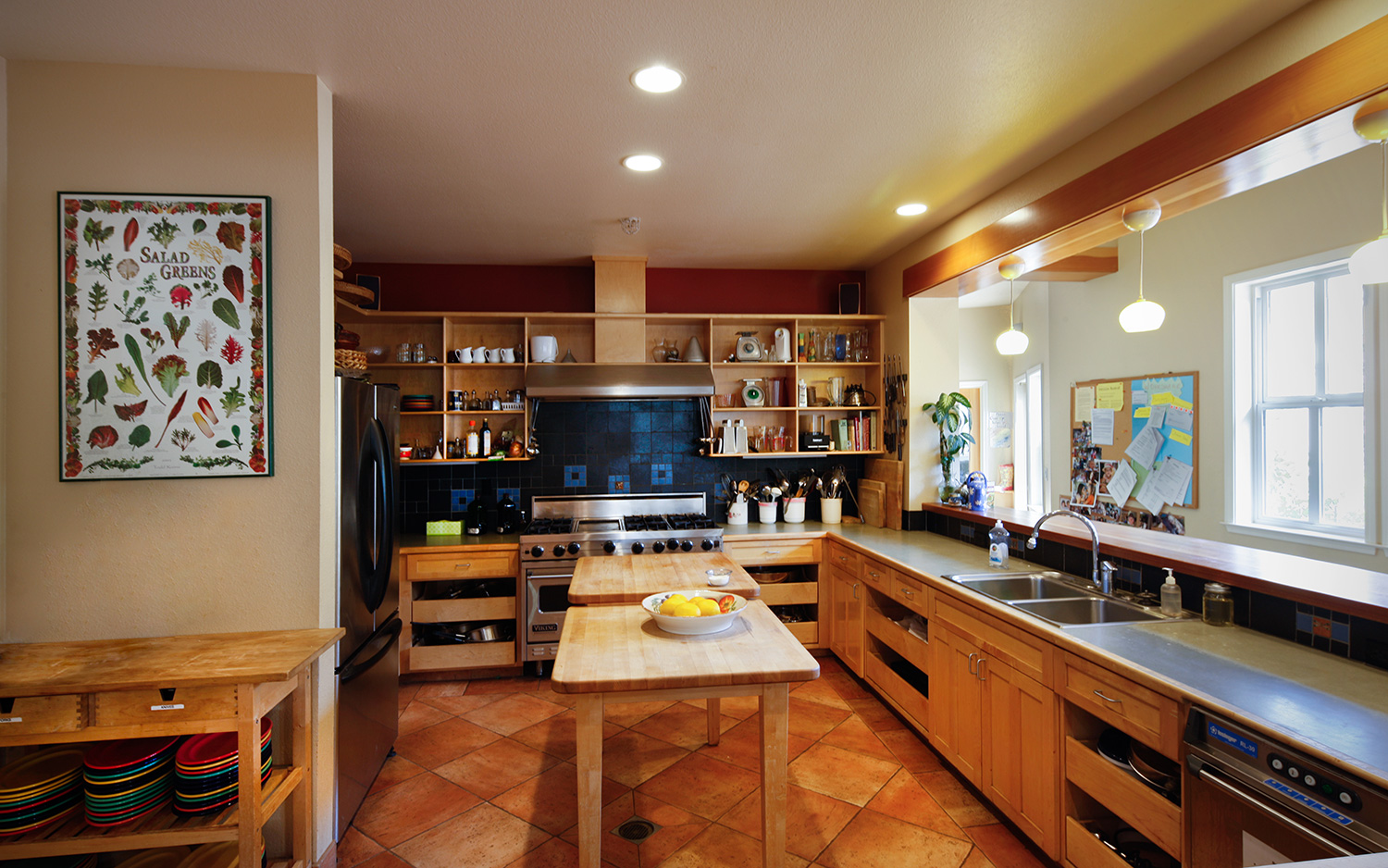
Maintenance
Each resident is expected to contribute a specified amount of ongoing maintenance and improvement work to keep the neighborhood in good shape. This ensures long-term stability for everyone, helps create a sense of shared ownership, and keeps costs down.
The Homeowners Association
Legally, a tiny neighborhood is no different from a typical neighborhood with an HOA. Importantly, each family owns the title to their home and can sell it whenever they would like.
Every household pays monthly dues to the HOA fund. This fund covers a good deal more than the typical HOA and can include fiber internet, heat, maintenance of the common space and grounds, building repair, solar panels, and property taxes.
So even though the HOA can cost $600-1000 per month, residents say that it's not much more expensive than operating a single-family home. For example, my internet alone costs $120 per month, and I spent $2,000 on roof repair this year. Having those and many other items bundled into an HOA would be very helpful for our family's budget and peace of mind.
Residents often mention how useful it is to share various big items like a lawn mower, a grill, and a workshop. Each person gets access to a broad array of equipment and amenities that would be hard to afford and maintain for a single family.
Parking
The car parking and garages are located in a separate area from the individual houses. This opens up a central courtyard useful for grilling, kids playing, gardening, and other activities typically reserved for a back yard.
The design of the parking lot relative to houses is one of the unusual but important design choices which fosters community interaction. Since the parking is near the common house and requires a quick walk to get to one's home, it increases the possibility of seeing and saying hi to neighbors.
It's still possible to drive up to each house for delivering big items or moving in and out, when necessary.
Energy Efficiency
One of the truly remarkable achievements over the past twenty years is the increasing affordability of solar power. Since 2000, the cost of solar has dropped by over 90%. Tiny neighborhood houses are built with roofs optimized for solar panels, which cuts monthly energy expense by about 60% in many parts of the world.

Often, townhouses are joined together, which saves both on the cost of building materials and the cost of heating and cooling a space. With firewalls separating each townhouse, residents report that noise issues are minimal.
Finally, residents say that their need for a large personal house is reduced by the usability of the common house. Most homes tend to be closer to 1,600 square feet for families or 900 square feet for individuals, which is naturally more energy efficient and cost-efficient.
Laundry
All units come equipped with space for a washer and dryer, but some residents say they prefer to skip having their own washer and dryer and use laundry facilities in the common house instead.
Relating to neighbors
Conflict
All relationships contain the possibility of conflict. To the extent that tiny neighborhoods includes more connected relationships with neighbors, it is natural that it would result in more conflict from time to time. Decision-making within a co-housing community is made by consensus and monthly meetings are held to make decisions about what is needed to keep the common spaces running well. In these meetings, people often disagree, discuss their differences, and make a decision about how to proceed. While we should never glamorize the irritating and exhausting nature of conflict, there's a sense of durability that comes from having a disagreement with someone, working through it, and moving forward.
From the reading I've done on established cohousing communities, residents acknowledge that there is, in fact, conflict. When surveyed, 89% of the residents said cohousing was a positive part of their life, even when including the conflict.
Privacy
The strategic design choices of tiny neighborhoods result in a built environment which looks a bit different. Considering our lives tend to have no common space at all, anything common looks unusual at first. But even with the addition of a common house, individual family privacy remains a crucial part of the design – each family still has their own house and the freedom to choose the level of community involvement that works for them.
Elder Care
As people age, they want to stay where they are. AARP says that 75-80% of people over 50 want to age in place and maintain their independence as long as possible.

It's very common for older adults to resist moving into an assisted living facility until they absolutely cannot live on their own any longer. I imagine that this is pretty stressful both before and after the move – adults spend a lot of energy thinking about what will happen as they grow older and then eventually make a difficult transition to an entirely new environment for the last few years of their life.
Tiny neighborhoods provide an opportunity to include a few smaller units in the community which are accessible for older people. Doing this extends their ability to live independently by 10 or more years while remaining in proximity to a community that knows them and can check on them. Older people maintain contact with people of other ages and can use their wisdom and experience and free time to encourage and help the community in their last few years of life, rather than doomscrolling Facebook alone.
Plus, since assisted living facilities cost $50,000-100,000 per year, providing a space for an older person to age is not just honorable, it's also massively more affordable for the family and allows the person to pass on more of their hard-earned assets to their children.
As I look forward to the days in which I am quite old, this is the kind of place I'd like to live in.
Conclusion
I hope this essay has been a fun thought experiment which sparks imagination for how life could be different. For many, this will have been nothing more than an interesting thought experiment, since tiny neighborhoods require a set of sacrifices which will be unappealing for most people, and the unfamiliarity of the concept can make it hard to even imagine.

But I wrote this hoping that the idea will resonate with a few people. I believe that it's possible to get more common space while not losing too much privacy. In the coming years, I want to explore building a community like this with other likeminded people. If this sounds interesting to you, let's talk.
The benefits I see are substantial – a safe space for children to play and elders to age, a neighborhood which is more than just a set of isolated houses, and a delicious dinner every Monday which I don't have to cook or clean up.
And, of course, a ping pong table.